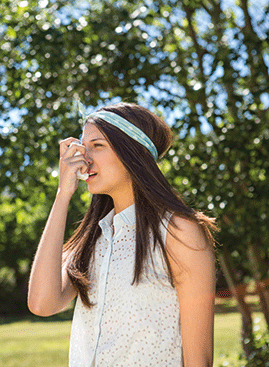
Asthma-free naturally
Patrick McKeown MA Bio suffered from lifelong asthma until he discovered the work of Russian doctor Konstantin Buteyko in 1998 and became accredited to teach the Buteyko Method in 2002. He teaches the method internationally to children and adults who suffer from asthma and breathing problems. He has written seven books on the Buteyko method including his latest The Oxygen Advantage.
Normal breathing during rest involves regular, silent, abdominal breaths drawn in and out through the nose. People with asthma, on the other hand often display habitual mouth breathing with regular sighing, sniffing and visible movements from the upper chest. During an exacerbation of asthma, symptoms like wheezing and breathlessness increase along with respiratory rate, relative to the severity of the condition. It is a vicious cycle; narrowed airways lead to heavier breathing which causes an increase in breathing volume, resulting in the narrowing of the airways and on and on, worsening the condition and establishing bad breathing habits as a matter of necessity.
In childhood, treatments for 43-year-old Julian’s asthma included cough medicine, trips to the coast for the benefits of sea air, and inhaling steam from a boiling kettle. On some nights, Julian remembers his wheezing being so bad that he stayed up most of the night with his head out of the window in an effort to breathe.
Any individual who experienced asthma as a child during the 1970s and 1980s can probably testify to the lengths that similarly worried parents took to try and help their child to breathe.
By the late 1980s Julian had been prescribed various reliever and preventative medications, in addition to regular trips to the hospital for nebuliser treatment.
This never-ending cycle of medication and hospitalisations continued for many years, and although Julian tried to keep fit, he often found he was unable to breathe, particularly during the small hours of the night.
Fast-forward to 2006, and Julian was taking higher doses of asthma medication while his fitness level gradually reduced, a totally unproductive cycle that was beginning to seriously affect his health and well-being.
Julian’s story is typical of any individual with moderate to severe asthma; although physical exercise can be very beneficial, many people with asthma simply tend to avoid it for fear of having an attack. In early 2007, Julian attended one of my Buteyko courses in Dublin at which we focused on breathing through the nose, breathing light and practising breath holds while walking. Julian took his last dose of reliever medication the day after the course.
Within six months, Julian’s asthma had drastically improved, and by Christmas 2007 he had his last dose of preventative medication. His fitness also improved and he was able to swim a mile per day, five times a week. In 2008, Julian’s GP agreed to reclassify his medical record as ‘asthma resolved’.
Julian’s experience has been replicated by thousands of asthma sufferers throughout Ireland. To celebrate World Asthma Day on 5 May this year, I gave an interview on the RTÉ Radio 1 John Murray show. Midway through the show, researchers received a call from Mayo-based school teacher Geraldine who had suffered from asthma for over 30 years.
Geraldine explained that for the past 18 months she has required no asthma medication, and told listeners that she couldn’t recommend the Buteyko Method highly enough.
Tell me about: Buteyko breathing
The Buteyko Method or Buteyko breathing was developed by Dr Konstantin Buteyko in the 1950s who believed that asthma is caused and made worse by breathing an amount of air greater than what the body requires. In others words – breathing too much. During sessions the subject will focus on decongesting the nose, switching to breathing through the nose, breathing light, holding their breath while walking and relaxation.
During six clinical independent trials investigating the Buteyko Method for asthma, results showed that the closer breathing volume reduced toward normal, the greater the reduction of asthma symptoms such as coughing, wheezing, chest tightness and breathlessness.
In 2014, breathing exercises from the Buteyko Method and (Papworth Method) were awarded an evidence level rating of ‘A’ by the Global Initiative for Asthma (GINA) – a world body of asthma experts – which is the highest grade that GINA assigns to any form of treatment.
Click here to read earlier Rude Health Magazine therapies articles.
Click here to read the latest issue of Rude Health Magazine.